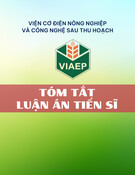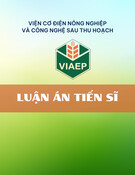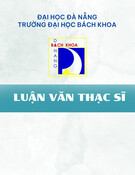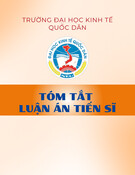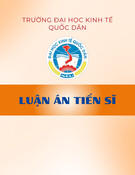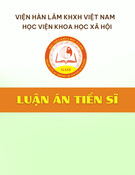
INTRODUCTION
1. Rationale for the study
Currently, in the context of international economic integration and
trade liberalization, the market for commodity consumption has moved
beyond the national border. The problem of international competition of
commodity products has become an issue for every country. These
countries, on the one hand, call for trade liberalization, on the other hand
have policies to protect domestic production, distort international trade,
and cause disagreement in the negotiations. These policies aim at
enhancing competitiveness of domestically produced goods in the
domestic and international market. The most protected and controversial
sector is the agricultural one.
Vietnam is an agricultural country, where most of its people live
in rural areas and are engaged in agricultural production. Therefore,
agriculture, rural and peasantry in general; production, export, and
raising competitiveness of agricultural products in particular, is always
the top priority in our Party and State’s policy. In the socio-economic
development strategy for the period 2010 - 2020, our Party has affirmed:
“Developing agriculture with large commodity production, high
productivity, quality, efficiency, competitiveness, friendly environment,
and exports expansion".
Over 30 years of innovation, Vietnam's agriculture in general,
productivity, quality and competitiveness of agricultural products in
particular, has gained vital achievements; from a country lacking food, it
now has become one of the leading agricultural exporting countries in
the world. Many agricultural products have become the main export
commodities of Vietnam, creating a significant source of income for the
country's economy, making an important contribution to the success of
poverty reduction and improving living standards of farmers, rural
development, serving as a stable foundation for the country's socio-
economic development.
However, besides the achievements, competiveness of some
Vietnam’s agricultural products is still low compared to the same kind of
agricultural products in the region and around the world. This is shown
in the following: the quality has been improved, but is still at a low level,
not meeting the increasingly high requirements of the market;
production costs remain high compared to inherent advantages; low
added value; output is not stable; Export markets are not diversified yet,
the market share is still the smallest in developed countries such as the






